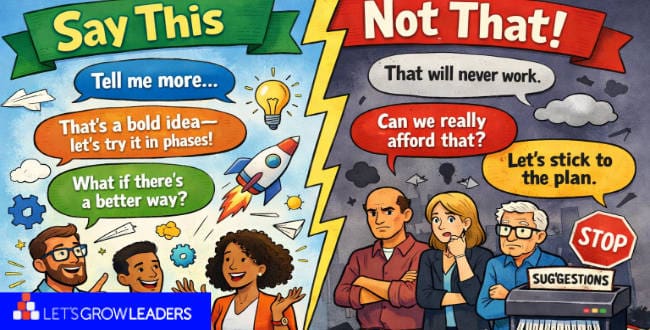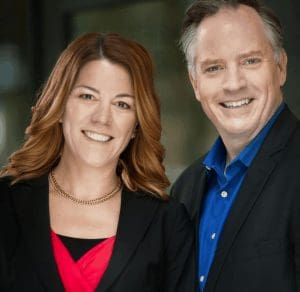Your Best Practice Might Not Work Everywhere
Javier was a well-loved director at an engineering design firm. He was also an accomplished Italian chef. Every year he would conduct an operational excellence rally that he personally catered with spaghetti made from homemade noodles, hand-crafted sausages from wild-game he hunted, and a sauce he cooked himself with vegetables he’d grown in his garden. It was an annual labor of love for Javier, a best practice the company respected, and his team left the annual rallies energized.
Another director in the same organization confided to us her doubts about her team ever performing like Javier’s, “I don’t boil water, much less cook like that. Our kick-offs are flat by comparison. I mean, I’d rather be with Javier’s team too.”
One Problem With Best Practice
She’d fallen into a common innovation trap that prevents many organizations from scaling their best micro-innovations. She’d focused on applying the practice, not the principle.
One of the challenges you’ll encounter as you develop or find best practices is that a game-changing solution for one team won’t work at all in another department.
Cooking a homemade meal for your team is a practice. For most people, that practice isn’t transferrable. But the principle of personally investing and connecting to your team is transferrable—every equipped leader can do that.
Finding the Principles In Best Practices
When your top-performing team seems to have discovered the secret to transforming their productivity, customer relationship, or sales, it is tempting to make everyone in the organization do the same thing right away.
We’ve worked with many executives who quickly rolled out the new behavior—only to become frustrated with spotty adoption and lackluster results. Leaders can fall into a reactive pattern of running from one great idea to the next, with none of them quite working.
The way out of the Best Practice Trap is to refine the ideas. It’s not the practice you’re after – it’s the principle. Find the principles that will work in different circumstances, then help your leaders and teams to localize those principles in ways that make sense for them.
Even if it looks great on paper, your leadership team is sold, and it worked well in the IT war room, field test the change first. The following steps will help you and your leaders identify why a best practice works and how to make it work in other contexts.
1. Ask Why It Works
You can find the principle within a best practice by asking, “Why did this work?” Sometimes you must ask “Why?” several times before you get to the essence of what really happened or the fundamental reasons for success. For example, you see a John, a customer service rep, consistently getting high scores from his customers. When your manager explores, he discovers that John ignores the opening script your quality team prepared and is connecting with genuine empathy. Of course, the answer is not to rewrite the script to match what John is saying. It’s to tap into the concept of genuine connection and help each rep get there in their own way.
Asking why takes courage—you might discover that your breakthrough was really a matter of luck and fortunate timing, rather than a repeatable principle everyone can use. That’s okay—when you know this upfront you save everyone the frustration of doing something that doesn’t feel right and won’t work.
Also, when you help your team members to think critically about their own ideas, they’re more likely to find meaningful solutions and have the confidence to share them.
In our Courageous Cultures research (download the white paper here) 40% of respondents said they lacked the confidence to share their ideas. 45% said there’s no training in critical-thinking and problem-solving. When you ask your team to think about why an idea works, you help to address both of these obstacles to building teams of innovators and customer advocates.
2. Test the Principle
When you first encounter a team member’s idea, you may trial and test it to learn more. That gives you an idea about why it works. Now it’s time to test that principle and see if it works the way you and your team think it does. Ideally, when you test the principle, try it in a couple of different settings, with different people.
3. Listen Closely
This is perhaps the most important part of testing a principle. As you test the principle and roll it out, really listen to what your people tell you. Check-in with stakeholders, partners, and customers. Respond to feedback with solutions, not selling. When you fix something, communicate it back using the 5×5 method—5 times, 5 different ways.
4. Ask How It Can Be Better
As you continue testing and rolling out the principle, ask questions that will help refine the principle:
- How can we address this and make the change serve its purpose?
- What’s working well and how do we leverage it?
- What enhancements do we need?
- Where should we head next?
All these questions help refine the principle—and they also build morale by including employees in your change efforts. At the heart of a courageous culture is the idea that great organizations build change together. Change isn’t something that’s done to employees.
5. Celebrate Different Expressions of the Principle
One key to successfully refining a best practice is to actively look for and tell stories about how people use the same idea in different ways. For example, if you’ve rolled out a principle of “making the customer feel that we’ve done everything possible to meet their need,” how are different teams living out that idea in their daily work?
For different customers, specific activities will probably look very different. When you find and celebrate these different activities and reinforce the underlying principle, it helps everyone think creatively about how they might do it.
Your Turn
Leave us a comment and share your principle (or best practice): When you’ve discovered a ground-breaking best practice, how do you find the idea that is transferable and can grow with other teams?







0 Comments